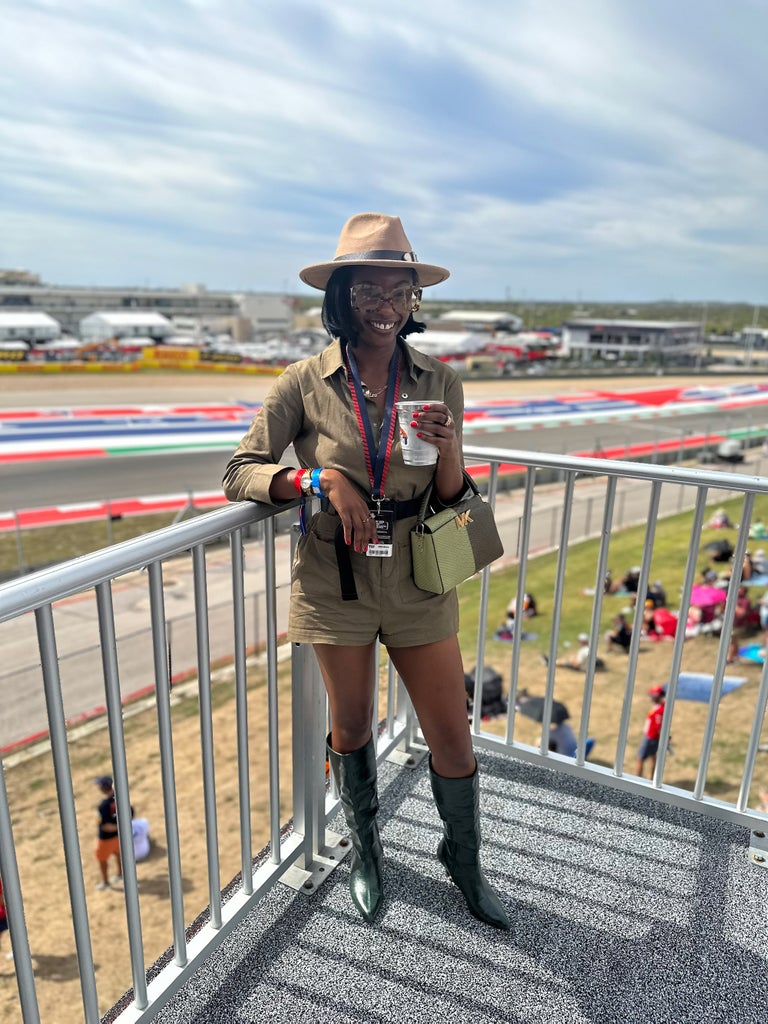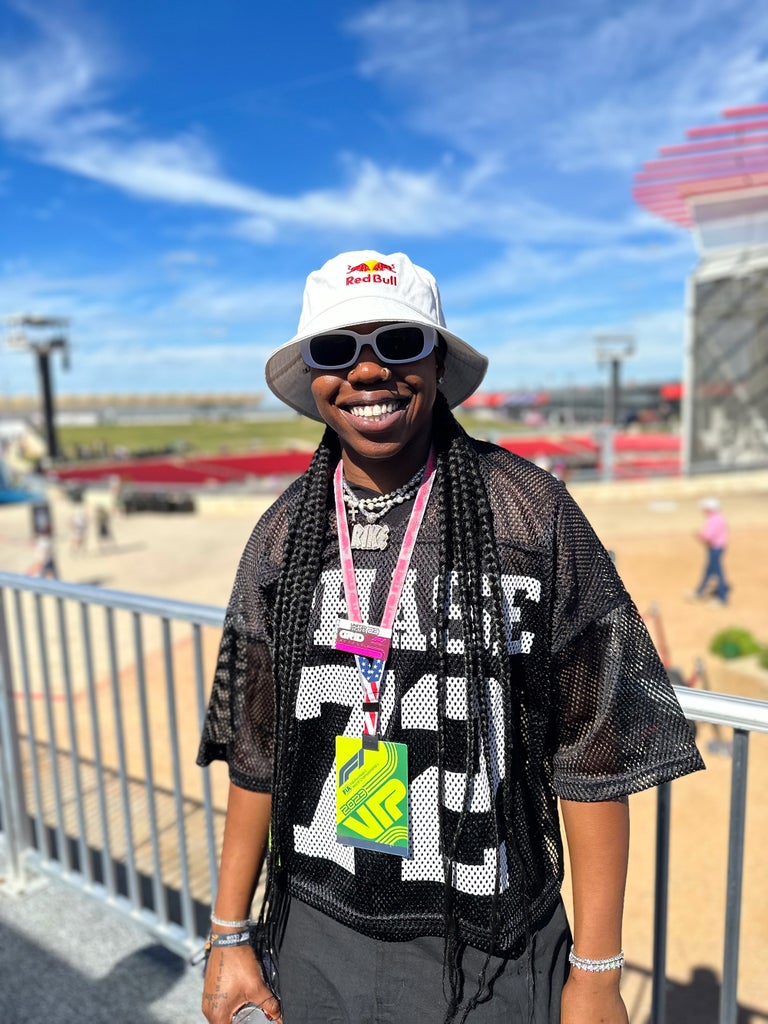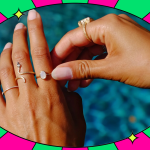Prior to my action-packed weekend at the recent Formula 1 race in Austin, I was already thinking: ‘How many of us gon’ there?’ As a Black woman, I had never dreamed of going to an F1 event because even though one of the greatest drivers in the world is Black, it didn’t seem like the space was for us. And although I’ll admit that F1 is certainly overwhelmingly a white man’s world (Lewis Hamilton is the lone Black driver), being at the legendary event solidified to me that F1 attracts all kinds of fans and with more diversity efforts, the events could easily reflect its mass appeal.
The United States Grand Prix was held last month at the Circuit of The Americas in Austin, Texas and drew an audience of nearly a half a million people from across the country over three days. I was invited as one of the only women journalists granted exclusive access with Red Bull. We had exclusive garage access to experience an unfiltered view inside the action-packed world of F1 with a glimpse of practice pit stops and behind-the-scenes track moments with top drivers.
We kicked off the four-day trip with a day of activities at Rally Ready, a rally racing driving school to race competitive cars with professional drivers and helicopter rides. I was hesitant about the helicopter ride as someone who has experienced panic attacks on commercial flights over the years and had to overcome a fear of flying. The moment in the helicopter was nothing short of liberation. It reminded me that sometimes you have to take a leap of faith, even if it’s frightening at first.
Next, we spent three days at the track amid scorching temperatures that topped 90 degrees with massive crowds packing the grandstands. Some highlights from the jam-packed weekend included riding past a solo Prince Harry on a golf cart, and a Paddock tour where we got to enter the drivers’ garage wearing headsets to listen in on all of the action.

During Sunday’s race, I spoke to Arike Ogunbowale, a WNBA player for the Dallas Wings, about her experience as a first timer. “I didn’t know how huge (F1) was,” Ogunbowale told Unbothered. ”But actually being here and seeing the excitement about it has been really dope.” Ogunbowale believes that the sports world could do more to increase diversity efforts across the board, especially for Black women. “Having representation and people interested in the sport will help grow the sport,” Ogunbowale said.

Chelcee Grimes is a UK-based professional soccer player, Grammy-nominated songwriter and Oracle Red Bull Ambassador who has been playing sports for over 15 years. Grimes, who is from Liverpool, believes that although there have been diversity strides in sports, there’s more efforts that can be done to create “more representation for the younger generation.”
“I’ve got a little sister who’s 14 and she needs to see more girls on the TV smashing it,” Grimes said. “Even if you don’t want to be a driver, there’s still a job that you can achieve in F1.”
Earlier this year, British businessman Craig Pollock –– founder and CEO of British American Racing –– revealed plans to launch a “50% male, 50% female” F1 team called Formula Equal. The project would be the first team in the sport that would provide an inclusive environment from boardroom executives to cockpit engineers. The project comes amid a dire need for diversity in the sport. According to a survey by the FIA released in 2016, the motorsport’s global governing body, only 6.5% of drivers were women, and just 16% of institutional employees and 19% of volunteers.
Lewis Hamilton is Formula One’s most decorated and successful driver, and the first (and only) Black driver. Hamilton, who drives for Mercedes, has won more races and qualified with the fastest time more than any other driver in the motorsport’s history. Over the years, Hamilton has consistently championed for more inclusivity and led efforts to include diverse engineers from minority groups. This includes the creation of the Hamilton Commission, an initiative launched by Hamilton with an aim to enhance the representation of Black people in the sport.
“We want to make sure that we’re champions and we’re pushing and creating that opportunity that could transform the lives of underprivileged kids on the way up,” Hamilton said during a Forbes event this summer. In 2020, he penned a heartfelt post on Instagram for Stephanie Traver, who made history as the first Black woman to stand on the Formula One podium.
I’ll admit that F1 is certainly overwhelmingly a white man’s world, but being at the legendary event solidified to me that F1 attracts all kinds of fans and with more diversity efforts, the events could easily reflect its mass appeal.
“This is an amazing achievement and I just wanted to acknowledge her for her hard work, positivity, and passion for her job,” Hamilton wrote in the post, adding that, “she wants to inspire young Black children, and children of color to believe that they can do it too, and I couldn’t agree more.”
During this year’s race in Austin, Red Bull driver Max Verstappen won the Formula One race, securing his 50th Grand Prix race victory. Hamilton and Ferrari’s Charles Leclerc were later disqualified due to technical infringements.
As a non-sports fanatic, my experience attending F1 was exhilarating, eye-opening and magical. I even found myself fantasizing about the day more African-American racers hit the track. I just know that we would come to Texas decked in the very flyest bomber jackets, sneakers and cowboy boots, just like hometown hottie Meg Thee Stallion.
The fact that Red Bull invited me for an unprecedented look at the nation’s top racing event is telling, because ultimately, access is the only way we knock down the doors of privilege and create our own lanes… literally!
Like what you see? How about some more R29 goodness, right here?
Who's To Blame For Tarte & Black Influencer Drama?
3 Black Women Creatives At CultureCon
Book A Trip To Belize & Thank Me Later



